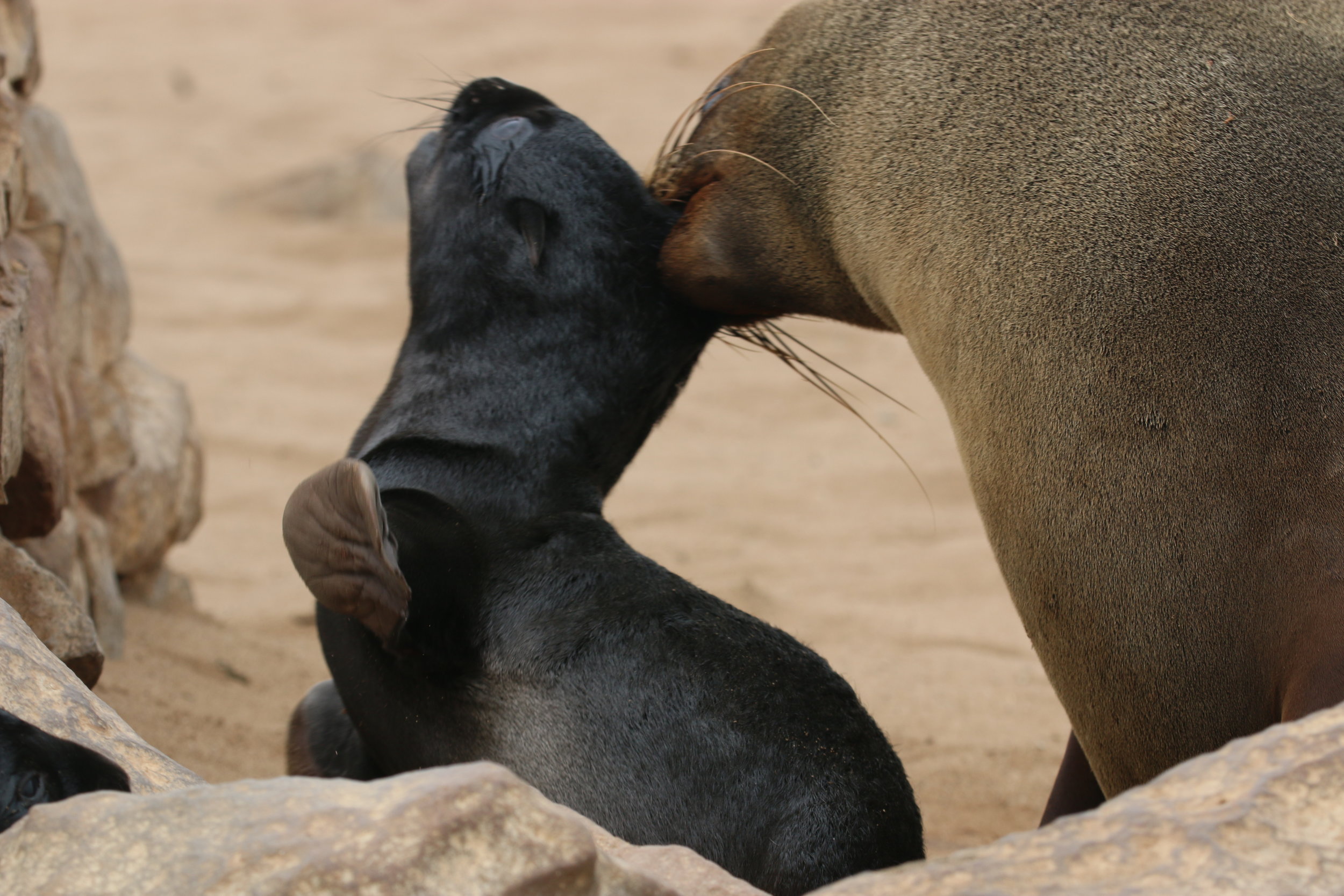Namibia: Cape Cross Seal Colony
WARNING: some of my photos are a little off-putting, I tried to group those at the bottom of the post to avoid unnecessarily grossing out people.
In the nineteenth century, the demand for clothing and accessories made from the jet-black pelts of baby fur seals led to their wholesale slaughter. Hunted nearly to extinction, they have since made an impressive recovery. Populations are on the rise and Cape Cross, on Namibia’s cold Atlantic shore, plays host to one of the largest breeding colonies of Cape fur seals in the world.
Fur seals belong to the eared seal branch of the pinniped family tree. True seals, like the ones we see at home on New England’s northeast coast, have no external ears and their rear flippers point backwards, meaning they wriggle on their belly on land. Sea lions and fur seals have external ears and their rear flippers are perpendicular to their bodies, so they can “walk” on land, albeit somewhat awkwardly. Fur seals are more closely related to sea lions than they are to true seals, though they tend to have thicker coats and longer flippers than sea lions.
Every year, tens of thousands of fur seals come ashore in Namibia to whelp, filling the sea air with their barking calls. Putting that many fish-eating mammals in any one spot also fills the air with a certain aroma that can be appreciated from a mile away.
With their huge, liquid eyes and rollicking gait on land, there are few things more adorable than a baby seal. Having been to other (smaller) pinniped colonies, such as the elephant seals in California, I was expecting plenty of noise. I was even somewhat prepared for the smell, though the stink raised by 80,000 seals is intense. What I was absolutely not prepared for was that, arriving at the peak of the birthing season, we were surrounded by newborn pups dragging their placentas around by their still-attached umbilical cords, calling for their mothers who were fishing at sea. Or the discarded bodies of pups that had succumbed to illness, injury or starvation. Or the way mother seals would grab a pup by any appendage and fling it out of the way of other seals with what appeared to be neck-snapping velocity. It was a really raw experience, and utterly unlike anything I’ve ever seen. As Ole, a fellow traveler, summed it up, “this is a house of horrors.” I was definitely a bit shell-shocked after, with the screams of the seals echoing in my ears and the smell of the colony permeating my jumper.
If you go: seals can be found on Cape Cross year-round, but whelping season is in November and December - this might be an attraction or a deterrent, depending on your inclinations. Some Vick’s vaporub or other scented ointment might be advisable for those with sensitive noses. There is a parking lot and an easily-accessible boardwalk that allow viewing. Visitors are asked not to approach the seals too closely or interfere with them. If you’re tempted, it’s worth remembering that these are marine predators with the teeth to make you regret any unwanted attention.



























